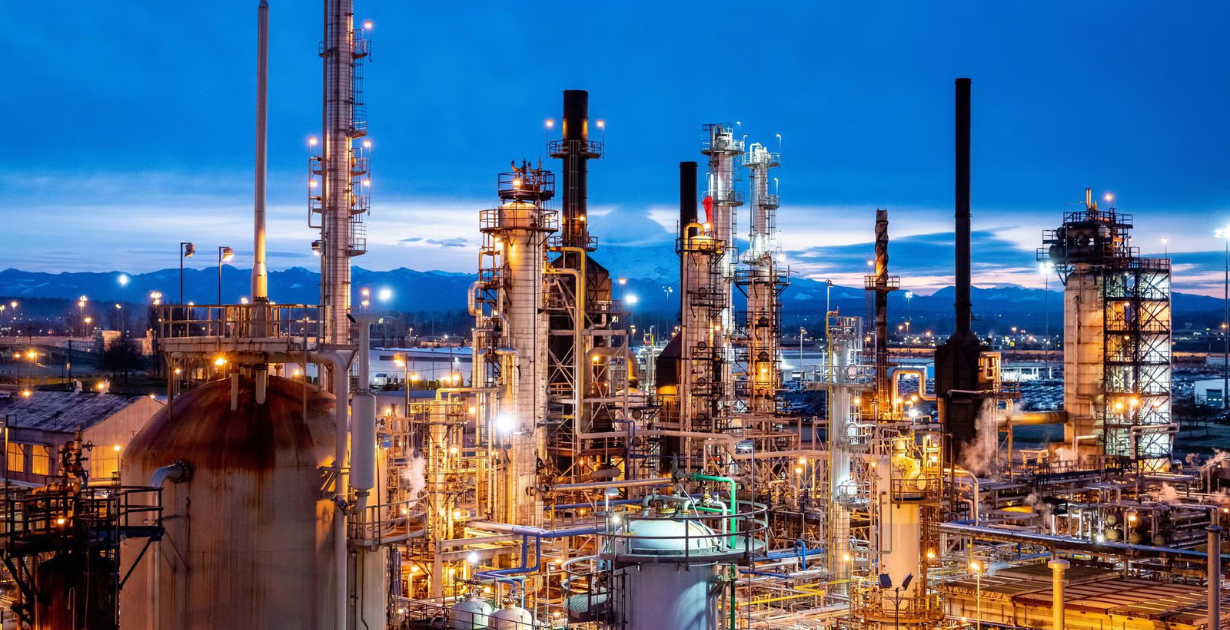Wood Mackenzie Identifies 101 Refineries, Warns Against High Cost of Carbon
Wood Mackenzie has issued a warning that the increasing cost of carbon poses a threat to the operations of 101 refineries, which collectively account for 21% of the global capacity.
Wood Mackenzie analysts have estimated that a total of 101 refineries out of 410 worldwide are at risk of closure over the next decade. They note that this figure represents 21% of the global refining capacity.
This estimate is based on the following factors: high operational costs in regions such as Europe, which collect carbon levies from their energy industry, and peak crude demand, which would reduce the demand for refinery output.
According to oilprice.com, Wood Mac regards the elevated operating costs of refineries as a particularly significant risk factor for their future prospects, as well as their investments in decarbonization.
The analysts wrote that refineries that lack committed investments in low-carbon technologies, such as energy efficiency improvements, alternative fuels, or carbon capture, are particularly vulnerable.
The report further stated that the European Union, UK, and Canada, which are regions with established or escalating carbon pricing costs, are experiencing the most pressure.
The analysts also observed that the carbon prices in these jurisdictions are expected to increase to three times the global average by 2035.
This will render the continuation of the life of certain refineries in the EU, the UK, and Canada economically nonsensical, unless policies are altered.
Several analysts have contended that China’s concerted effort to electrify its transportation sector and its diversification into LNG-powered vehicles would significantly reduce oil demand. In fact, consumption data indicates that there has been an effect.
According to Wood Mackenzie, the refining and petrochemical facilities have the highest likelihood of survival.
This is due to the fact that the majority of fuel demand forecasts, despite being founded on policies that are not as immutable as many presume, anticipate a decrease in the medium term. Conversely, the majority of plastics forecasts are more optimistic, irrespective of climate policies.
The U.S. Energy Information Administration reported in the March edition of its Short-Term Energy Outlook that there is a risk of petroleum shortages arising if closures proceed as predicted, which is quite likely in the current political context in places such as Europe, the EU, and Canada.
Yesterday, eight Organization of Petroleum Exporting Countries (OPEC+) countries unexpectedly agreed to advance their plan to phase out oil output cuts by increasing output by 411,000 barrels per day in May. This decision caused oil prices to prolong their previous steep losses.
After OPEC updated its plans in a statement, oil, which was already down over 4% following U.S. President Donald Trump’s announcement of tariffs on trading partners, continued to decline. Brent crude plummeted by over 6% to below $70 per barrel.
The most recent stratum of output limits was to be progressively unwinded by eight members of OPEC+, which includes OPEC allies headed by Russia. As part of this plan, they were scheduled to increase output by 135,000 barrels per day in May.
But following an online conference of the eight countries on Thursday, the group declared that it would increase output by 411,000 bpd in May. “The positive market outlook and the ongoing healthy market fundamentals” were the reasons cited by OPEC.
In a statement regarding the volume, OPEC stated that it includes the increment that was originally scheduled for May, as well as two monthly increments. “The gradual increases may be suspended or reversed in response to changing market conditions,” it stated.
The May hike is the subsequent phase of a plan that Russia, Saudi Arabia, the United Arab Emirates, Kuwait, Iraq, Algeria, Kazakhstan, and Oman have agreed to progressively dismantle their most recent output reduction of 2.2 million bpd, which was implemented earlier this month.
Additionally, OPEC+ has implemented 3.65 million bpd of additional output limits until the end of the year in order to stabilize the market. The aggregate of 5.85 million bpd is approximately 5.7% of the global supply.
news via inbox
Get the latest updates delivered straight to your inbox. Subscribe now!




